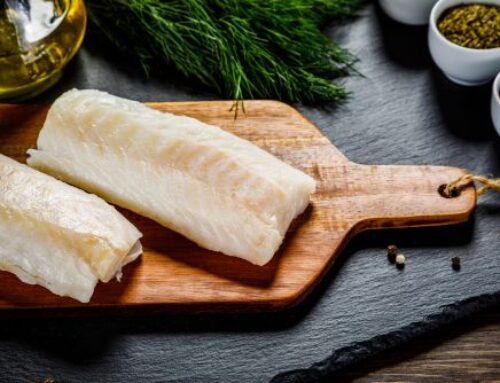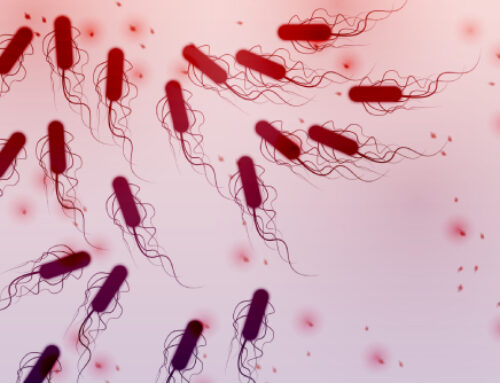Did You Know Essential Oils May Protect You and Keep Your Kitchen Clean?
Water pollution, environmental toxins, and damage to fish and wildlife are all linked to the use of cleaning chemicals commonly found on grocery store shelves. As the understanding of the damage air pollution inflicts on human health has grown, the auto industry has taken steps to reduce emissions from their cars. However, pollution associated with air and water does not respect county, state or country boundaries, as demonstrated by the fact much of the smog experienced on the U.S. West coast originates in Asia.1
A collaborative effort of more than 40 researchers looking at data from 130 countries has called air pollution the “largest environmental cause of disease and premature death in the world today.”2 Fine particulate matter is the most studied type of air pollution and refers to particles smaller than 2.5 micrometers in diameter, which is about 30 times smaller than the width of a strand of hair. This is small enough to pass through lung tissue and enter your bloodstream, triggering chronic inflammation and chronic diseases.
A recent study published in the American Journal of Respiratory and Critical Care Medicine demonstrated exposure to common cleaning solutions at home may increase your exposure to toxic fine particulate matter.3
Using household cleaners as little as once weekly for 20 years may speed decline in lung function as much as smoking one pack of cigarettes each day for 10 to 20 years.4 While a clean, uncluttered home is a sanctuary from the stress of work and life, you don’t have to sacrifice your physical health for your mental health.
Bacteria Triggers Food Poisoning
Bacteria on kitchen surfaces may increase your potential for food poisoning. FoodSafety.gov lists the top bacteria and viruses causing food poisoning, resulting in illness, hospitalization or death, as:5
Salmonella
Listeria
Norovirus
E. coli
Campylobacter
Clostridium
However, these are not the only bacteria causing gastrointestinal distress and food poisoning. Another is Staphylococcus aureus (S. aureus), commonly found in foods and producing toxins when food is left at room temperature.6 Toxins may be present in foods at dangerous levels, even without signs the food has spoiled. S. aureus is also present on the skin, hair, nose and throat of 25 percent of healthy people7 and may easily be transferred to food preparation areas.
Although the bacteria is killed by cooking, the toxins growing in the food are not eliminated by heating.8 Once the bacteria begins growing on the preparation surface, it produces a strong biofilm capable of resisting most attempts at removal.9
Essential Oils May Protect You and Keep Your Kitchen Clean
Writing in the international journal LWT — Food Science and Technology,10 researchers published results of a study demonstrating the effectiveness of oregano essential oil in the removal of young and mature S. aureus biofilms. Staphylococcus is an underlying pathogen in many instances of food poisoning around the world. This study highlighted the potential for oregano essential oil and carvacrol, a compound found in oregano oil, to reduce the number of cells sticking to food preparation surfaces.11
In the study, oregano oil performed more effectively than sodium hypochlorite, a conventional means of removing bacteria from stainless steel surfaces used in the food industry. Unlike sodium hypochlorite, oregano oil does not cause corrosive damage to surfaces.
The study supports the results of previous research demonstrating the antimicrobial activity of oregano essential oil. In one study the oregano oil was the most effective against E. coli12 and in another was highly effective against salmonella in washing organic leafy greens.13
In a paper published in Emerald Insight, researchers from Brazil demonstrated oregano oil had antibacterial activity against microorganisms responsible for food spoilage, except pseudomonas.14 Oregano essential oil is also the subject of studies by the swine industry, as its components have demonstrated the ability to permeate and depolarize bacterial membranes, resulting in pathogen cell death.
Research done at Iowa State University looked at common livestock pathogens and the ability of oregano essential oils to protect against inflammatory damage. The researchers found it was a safe and accepted feed ingredient with potent activity against gram-negative and gram-positive bacteria.15
In another study,16 researchers discovered that, in gaseous form, 14 essential oils had strong antimicrobial activity against bacteria known to cause food poisoning and upper respiratory infections. These bacteria included E. coli, S. aureus, S. pneumoniae, S. pyogenes and H. influenzae.
The gaseous form of essential oils were most effective against H. influenzae and least effective against E. coli, but exhibited some degree of antimicrobial activity against all.17 In each of these studies researchers used oil of oregano from the true oregano plant and not common oregano marjoram found in your kitchen cabinet.
History of Oregano Plant
Oregano is the common name for the plant Origanum vulgare.18 It is also known as Spanish thyme, wild marjoram or European oregano. Oregano is in the same genus as the mint family and originally came from southwestern Eurasia and the Mediterranean region. It’s often grown for three to four years, but in northern climates it may be grown as an annual plant.
Originally found in Greece, it was believed by the Greeks to have been created by the goddess Aphrodite as a symbol of joy. The Romans adopted the plant, as they enjoyed the taste and how easy it was to cultivate.19 Today, oregano is used frequently in Italian cuisine and is the key ingredient in many tomato sauces, pizza sauces and vegetable dishes.
Oregano also has a long history of medicinal use. The Greeks used it as an antidote for poison, to treat skin irritations and infections, dropsy, convulsions and as an antidote for narcotic poisoning.20 Hippocrates used oregano as an antiseptic and it has been used in oil form to treat ear infections in children and adults.21
You can find oregano oil sold in most health food centers, pharmacies and even your local grocery store. Oregano oil is high in phenols, which are natural phytochemical compounds with beneficial antioxidant effects. The two most abundant phenols in the oil are:
- Thymol — a natural fungicide with antiseptic properties. It helps boost your immune system, works as a shield against toxins, and even helps prevent tissue damage and encourages healing.
- Carvacrol — found to be effective against various bacterial infections, including Candida albicans, Staphylococcus, E. coli, campylobacter, salmonella, klebsiella, aspergillus mold, giardia, pseudomonas and listeria.
Research Demonstrates Oil Rivals Antibiotics Without Developing Resistance
Each pound of medicinal grade oregano oil is the product of over 1,000 pounds of wild oregano.22 Oregano oil has demonstrated antibacterial effects on human tissue as well as on your kitchen counters.
In a study published in the Journal of Medicinal Food, researchers found oregano oil was effective against three gram-negative (E. coli, Salmonella typhimurium, Pseudomonas aeruginosa) and two gram-positive (S. aureus, Bacillus subtilis) bacteria.23 Another study found the oil to be effective against parasites and even some cancer cells.24
In a paper published in Pathogens and Disease, researchers found oregano oil was an effective adjunct to antibiotics in fighting multiple drug-resistant E. coli.25 Yeast infections resistant to the antifungal drug Diflucan responded to the use of oregano oil.26 The oil has also demonstrated effectiveness against the deadly superbug, methicillin-resistant Staphylococcus aureus (MRSA) infections.27
Of interest is research reporting oil of oregano kills Bacillus cereus and Bacillus anthracis (anthrax) microbial spores.28 In testing for antibiotics against a bioterror threat, researchers often test both cereus and anthracis29 as they are from the same species.30
Researchers have demonstrated the carvacrol in oil of oregano changes the permeability of the Bacillus cereus cell membranes, ultimately resulting in cell death.31 Urinary tract infections,32 respiratory infections33 and parasitic infections34 all respond to treatment with medicinal strength oil of oregano, even when the infection is resistant to pharmaceutical antibiotics.
Oregano Essential Oil Offers Many Other Benefits
The health benefits of oregano essential oil may be attributed to high levels of antioxidants and the oil’s antiviral, antibiotic, antifungal and anti-inflammatory properties.35
- Respiratory: Expectorant properties of oregano essential oil may loosen uncomfortable mucus and phlegm buildup in your respiratory tract and sinuses. The oil may prevent and treat symptoms of respiratory ailments.
- Anti-inflammatory properties with internal or external use may help reduce pain associated with arthritis or injury.
- Antifungal properties may help in the treatment against fungal toenail infections.36
- Antiviral properties may provide protection against viral infections, including the common cold.
- Anti-allergenic properties of oregano oil may be related to the oil’s anti-inflammatory and sedative properties, which may help reduce hypersensitivity from external stimuli associated with allergic symptoms.
Homemade House Cleaning Products
Including oregano essential oil in your homemade cleaning products is simple, easy and an effective means of killing pathogens. Below are recipes for cleaning products you can make at home with ingredients you may already have in your kitchen cabinet.
Don’t settle for using refillable plastic spray bottles available at the store. Instead, ditch the plastic bottle for a glass bottle to eliminate the potential for nasty chemicals from the plastic bottle leaching out into your cleaning supplies. MommyPotamus37 offers a solution so you don’t have to purchase a specific glass spray bottle. Use an old screw top bottle in the size of your choice, and fit the sprayer from a plastic spray bottle right on. Simple and easy! All-purpose cleaner:
Ingredients
- 1 cup water
- 2 teaspoons castile soap
- 20 drops essential oil
Instructions
- Pour ingredients into a spray bottle, preferably made of glass
- Shake well before use
- Store in a cool, dark place. (Essential oils oxidize in sunlight)
The following natural antiseptic cleaner from naturopath and herbalist Janella Purcell may be used in a spray bottle or a bucket in your kitchen, bathroom and children’s areas. It is safe, smells great and effectively cleans most surfaces:38 Combine four drops of oregano oil with 10 drops of lemon oil and a quarter-cup of white vinegar. Add this to a bucket of water. Use this mixture to wipe and clean surfaces.
Making Oregano Oil Infusion at Home
Consider growing your own oregano plants at home as they do well in the garden or in pots. Discover how easy it is to grow oregano in my previous article, “What Are the Health Benefits of Oregano?” Extracting oregano oil requires a special distillation process. However, there is a simple way to make your own oregano oil infusion at home. Here’s a basic recipe from HomegrownandHealthy.com:39
Ingredients
- Oregano leaves, chopped or crushed
- Olive oil, almond oil or grapeseed oil
- Sanitized jar with lid
Instructions
- Boil water in a saucepan. Once it reaches a rolling boil, turn off the heat.
- Using a 1-to-1 ratio of oil to leaves, put the oil of your choice and oregano leaves in a sanitized jar and close the lid.
- Put the jar into the hot water for up to 10 minutes to help the leaves release their natural oils.
- Remove the jar from the hot water and put it in a sunny window for two weeks.
- Shake every two to three days.
- After two weeks, strain the oil from the leaves and place into a new sanitized jar.
- Preserve the oil with a few drops of grapefruit seed essential oil.
- Store in a cool, dark place.
Always do a patch test on your skin before using. The infusion oil can be rubbed over inflamed areas, such as sore muscles, bug bites, burns, arthritis and carpal tunnel. The oil may also be rubbed on your head for sinus and migraine headaches.
https://articles.mercola.com/sites/articles/archive/2018/04/25/clean-with-oregano-oil.aspx
Sources and References
1 NPR, March 3, 2017
2 The Lancet, 2018;391(10119):462
3 American Journal of Respiratory and Critical Care Medicine, 10.1164/rccm.201706-1311OC
4 AJC.com, February 16, 2018
5 FoodSafety.gov, Bacteria and Viruses
6 WebMD, Staph Food Poisoning
7 FoodSafety.gov, Staphylococcus
8 Centers for Disease Control and Prevention, Staphylococcal Food Poisoning
9, 10 Prevent Disease, April 11, 2018
11 LWT, 2018, 93:293
12 Microbial Ecology in Health and Disease, 2015;26:10.3402
13 Food Microbiology, 2013;34(1)
14 Emerald Insight, Antibacterial Activity of Oregano Essential Oil Against Foodborne Pathogens
15 Iowa State University, Antibacterial and Antioxidant Activity of Oregano Essential Oil
16, 17 Journal of Antimicrobial Chemotherapy, 2001;47(5):565
18, 19, 20 MySpicer, The History of Oregano
21 Nature Hacks, Healing Herbs: The History and Health Benefits of Oregano
22 Dr. Eric Z, Natural Antibiotic Alternative
23 Journal of Medicinal Food, 2013; 16(12):1115
24 Revista Brasileira de Farmacognosia 21(6):943
25 Pathogens and Disease, 2008; 53(2)
26 Canadian Journal of Microbiology, 2008;54(11):950
27 Medical News Today November 24, 2008
28 LewRockwell, October 13, 2001
29 Biomed Research International, 2014; 2014: 735413
30 Applied and Environmental Microbiology, 2000; 66(6): 2627
31 Applied and Environmental Microbiology, 1999; 65(10): 4606
32 Medycyna Doświadczalna i Mikrobiologia 2012;64(4):297
33 Indian Journal of Pharmaceutical Science September 2012;74(5):443
34 Journal of Parasitology Research 2006;98(6):557
35 Organic Facts, 11 Amazing Benefits of Oregano Essential Oil
36 Home Remedies for Life, April 4, 2018
36 MommyPotamus, DIY All Purpose Cleaner
37 MommyPotamus, DIY All Purpose Cleaner
38 Janella Purcell, July 2, 2015
39 Homegrown and Healthy, How to Make Oil of Oregano





Leave A Comment